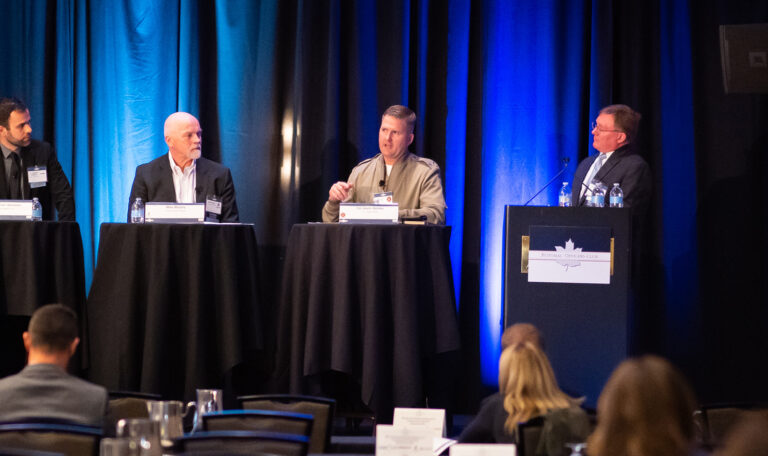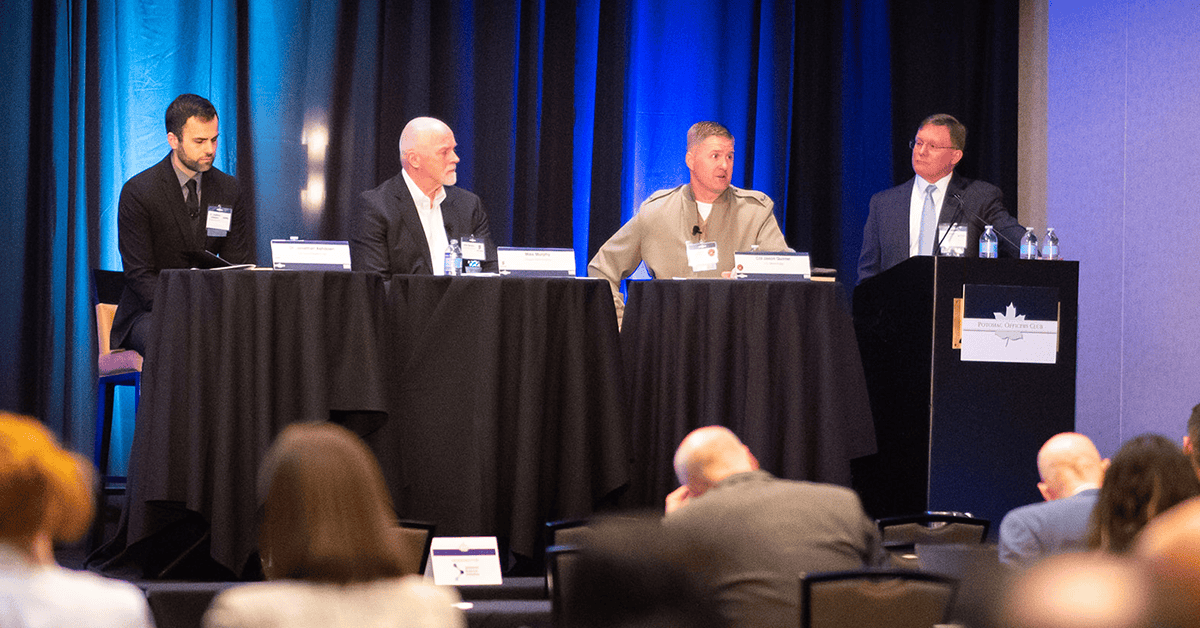The Department of Defense is working to adopt commercial technologies at a faster rate than ever before as the United States’ peer and near-peer competitors increase their own technological capabilities.
This approach, known as a “fast follower” strategy, was outlined in the 2022 National Defense Strategy, which called for the DOD to be a “fast-follower where market forces are driving commercialization of militarily-relevant capabilities” in a number of emerging technology areas.
Jeff Harman, president and CEO of Oceus Networks, kicked off a 5G-focused panel discussion at the Potomac Officers Club’s 9th Annual Defense R&D Summit by asking panelists how the DOD is becoming a fast follower in 5G, what is left to discover about the evolving technology and what is still standing in the way.
5G unlocks a trove of new opportunities in networking and telecommunications, but we’re only just beginning to scratch the surface, panelists agreed, and innovation in this area is beginning to take shape.
“If you really look at the portfolio of technologies that 5G is comprised of, it’s more of a revolution rather than an evolution from 4G,” shared Dr. Jonathan Ashdown, senior electronics engineer at the Air Force Research Laboratory.
One such area in which Dr. Ashdown is seeing expanded potential for 5G is V2X, or vehicle-to-everything connectivity.
“There’s interest from NASA and Space Force on leveraging 5G for urban air mobility and manned-unmanned teaming for Air Force use cases as well. I think there’s a lot we can do,” he explained.
Dynamic spectrum utilization is also coming to the forefront of the 5G conversation as large swaths of spectrum are being auctioned off and competition for certain bands increases.
Dr. Ashdown advocated for more investment in this area going forward, urging that the DOD should be “putting dollars toward spectrum sharing technologies, and not only toward the development of the spectrum sharing technologies, but also with the transition to programs of record and then other transition paths.”
Col. Jason Quinter, assistant chief of staff, G-6 for the U.S. Marine Corps’ 3d Marine Aircraft Wing, said he anticipates innovation in 5G millimeter wave, NEMO and other technologies that have a myriad of military applications in the next three to five years as technology matures and we move closer to 6G.


But today, one of the key barriers to rapid technology adoption and integration within the DOD is its decades-old planning, programming, budgeting and execution process known as PPBE. The 2022 National Defense Authorization Act established a Commission on PPBE Reform, but in the meantime, government and industry officials are working to adapt to the current process.
“We’re all kind of beholden to the process,” said Col. Quinter. “And until somebody comes up with a better idea for POM and how to create budgets, it’s the process that we’re beholden to for the taxpayers. It worked really well in the industrial age, but now we’re in the information age, and innovation happens much faster.”
In the commercial world, concepts like DevSecOps and service-oriented architecture can “iterate at lightning speed,” compared to DOD timelines Col. Quinter said, noting that this paradigm is almost reversing the requirements development process. Now, instead of the DOD leading the requirements process and engaging industry, commercial technology companies are initiating the relationship by bringing innovative products to the department.
“That would never have happened 30 years ago when we had large R&D budgets, but that’s the world we live in now, so we’re having to adapt to that,” he shared.
As the defense ecosystem adjusts to this paradigm shift, Mike Murphy, chief technology officer for Ericsson North America, said the DOD should be fostering a closer relationship with its industry tech providers and getting involved with them earlier on.
“For the DOD to embrace [5G] even more [it needs] to get the requirements in much earlier in the standardization phase so that we, as a vendor, can look at implementing those at the right time,” he shared.
“We need more integration between industry and the DOD — that’s for both short-term and long-term activities,” Murphy said. “We even need to think about 6G because so far, the DOD hasn’t really been a big player in the standardization process, but now is the right time to start looking at that so we can get the hook in and so that even a wider set of use cases become part of the standard rather than the niche application.”
Learn more about the future of 5G during the ExecutiveBiz 5G Forum on April 25. Register here to join the conversation!










